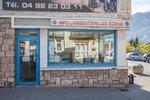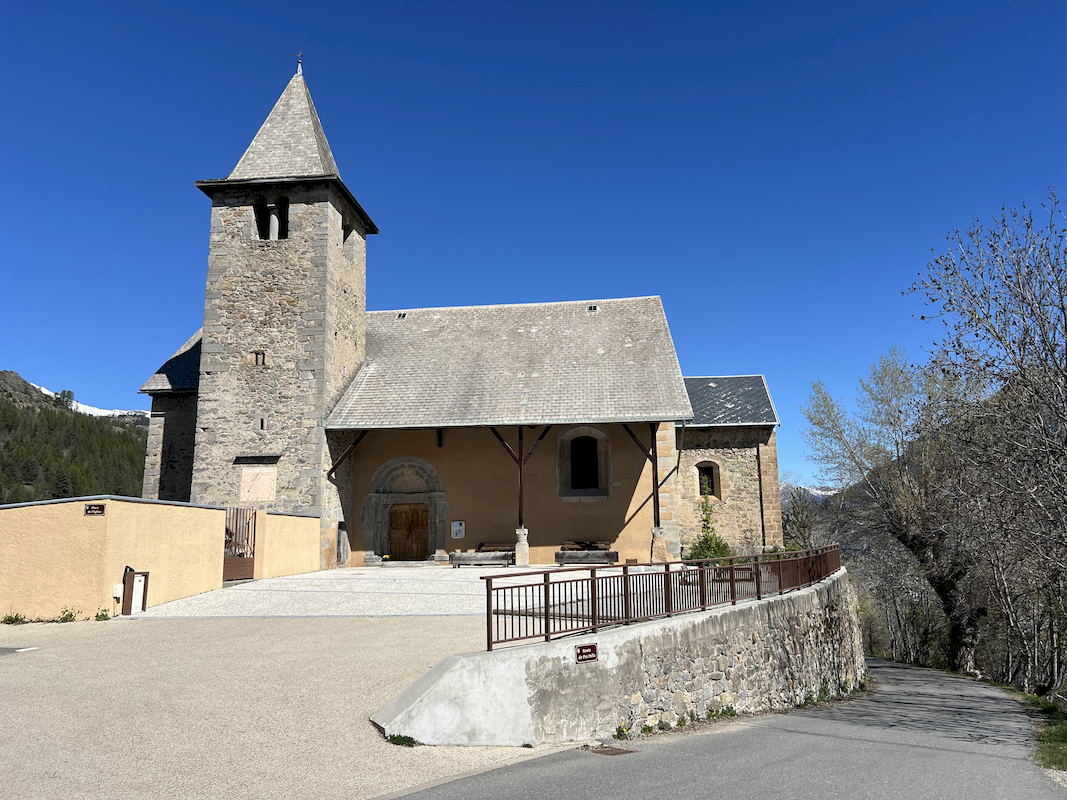
3. From Champcella to Saint-Martin-de-Queyrières (stage on the Super Noir - trail no. 15)
Set out from the charming hamlet of Champsella and take to the heights to take in high alpine landscapes: enjoy views over Mont Pelvoux and the Tête du Peyron, contemplate the Lac de l'Ascension, wander through alpine pastures… just some of the things in store on this trail!
Description
In Champcella, take the D38A and then the D388 heading towards Freissinières. Carry straight on until you reach the Chapelle de Rame.
- Turn left twice to pass in front of the Chapelle de Rame, continuing on towards Pallon.
- In Pallon, turn right and cross the River La Durance heading for La Roche-de-Rame. Go through the village heading towards the cemetery. Before the cemetery, turn left.
- Turn left. At the end of this track, carry on by turning right on the D38. A little further on, cross the bridge on the right. After the Bouchouse hydroelectric plant, turn left. Follow the path as far as the Bel Pinet sector.
- At the Bel Pinet sector, take the footpath on the left and continue straight on as far as the Lac de l'Ascension heading for La Roche Baron.
- At La Roche Baron, turn right heading for Saint-Martin-de-Queyrières.
- Departure : Champcella
- Arrival : L’Iscle de Prelles campsite, Saint-Martin-de-Queyrières
- Towns crossed : Champcella, Freissinières, La Roche-de-Rame, and Saint-Martin-de-Queyrières
Altimetric profile
Recommandations
Before setting off, it is very important to check the opening periods for this route on the website: https://stationdetrail.com/fr/stations/le-pays-des-ecrins/parcours
Check weather conditions before setting off
Rescue services contact details: Secours Montagne (Mountain Rescue): +33 (0)4 92 22 22 22 or 112
Show consideration for the work of farmers, livestock keepers and owners
Close all gates behind you
Take your litter home
Do not take shortcuts across pastureland
The trail routes are also suitable for walking
 In mountain pastures, protection dogs are there to protect the herds from predators (wolves, etc.).
In mountain pastures, protection dogs are there to protect the herds from predators (wolves, etc.).
When I hike I adapt my behavior by going around the herd and pausing for the dog to identify me.
Find out more about the actions to adopt with the article "Protection dogs: a context and actions to adopt".
Tell us about your meeting by answering this survey.
Information desks
23 Avenue de la République, 05120 L'Argentière-La Bessée
Vallouise Park house
, 05290 Vallouise
Information, documentation, models, exhibitions, screenings, product sales and works of the Park. Guided tours for school, reservation required. The new Park House opened in Vallouise since June 1, and offers visitors an interactive permanent exhibition inviting to explore the area and its heritage. A temporary exhibition space will allow a renewed offer. Finally, the device is completed by an audiovisual room to organize screenings and conferences Free admission. All animations of the Park are free unless otherwise stated.
Transport
Public transport >> www.pacamobilite.fr
Consider car-sharing >> www.blablacar.fr
For more information, ask at the Tourist Information Office nearest to the trail starting point.
Access and parking
10 km from L'Argentière-La Bessée, take the N94 and then the D38.
Parking :
15 points of interest
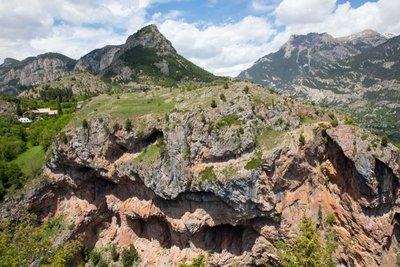
Le sentier du Gouffre - Thibault Blais Photographie  History
HistoryThe Sentier du Gouffre - the ravine path
The Sentier du Gouffre has sometimes been described as a Roman road, but we do not know the exact route the Roman road followed. One thing is certain, it used to be used by the villagers to reach their fields and vineyards, and for any other journeys they had to make.
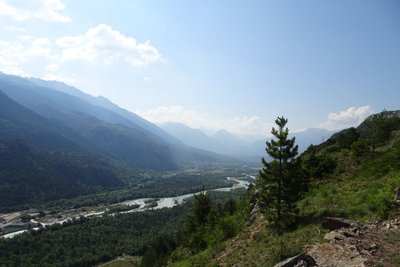
La vallée de la Durance - Office de tourisme Pays des Écrins  Geology and geography
Geology and geographyThe high Durance valley
Protected from Atlantic influences by the Massif du Pelvoux, the high Durance valley has a very dry climate with wide seasonal temperature fluctuations. It has grasslands very similar to the steppes of Central Europe which are rare in France. It is part of the Natura 2000 “Steppique durancien et queyrassien” (Durance and Queras valley steppes) site.
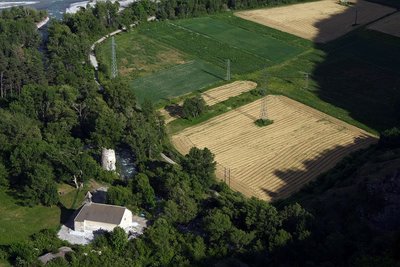
Plaine de Rame et la Chapelle pris de la cime des Rampes - Jean-Philippe Telmon - Parc national des Écrins  History
HistoryThe lost village
In ancient times, the Durance valley was a key communication corridor. Rama was a kind of staging post on the Roman road. In the Middle Ages, Rama was a small town with a noble's château. But the village was devastated by the capriciousness of the Durance and the Biaysse rivers on numerous occasions and the inhabitants gradually deserted the site, moving to neighbouring villages. The attachment of the parish of Rame to that of La Roche in 1446 is indicative of this decline.
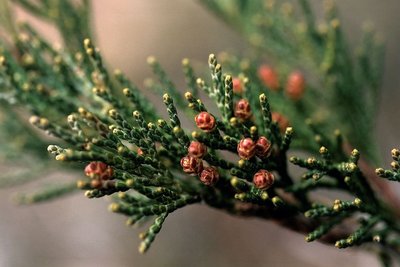
Genévrier thurifère (fleurs femelles) - Bernard Nicollet - Parc national des Écrins  Flora
FloraJuniperus thurifera or Spanish juniper
This small tree is present in North Africa, the Iberian Peninsula and in a few departments in southern France, including the Hautes-Alpes. It is regarded as a relic from a warmer period far back in history. It has found a refuge in well exposed situations, on warm sunny slopes. Its needles are in the form of scales, lying against the branches. It is a monitored species.

L'aristoloche pistoloche - Damien Combrisson - Parc national des Écrins  Flora
FloraThe Aristolochia pistolochia
The hamlet of Pallon is in a sunny location. Around the village, a curious plant with long brown trumpet-like flowers grows on the edges of the stone piles in the fields and meadows: the aristolochia pistolochia or birthwort. Of Mediterranean affinity, this plant benefits from the hot dry climate here and is virtually at its northern boundary. It is the host plant of the caterpillars of a rare and protected butterfly: the Spanish festoon.
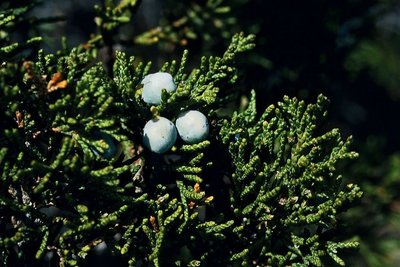
Le genévrier sabine - Bernard Nicollet - Parc national des Écrins  Flora
FloraThe savin juniper
A low spreading shrub, the savin juniper is very common in stony meadows and uncultivated land on warm slopes. Its dark, matte green leaves in the form of small scales, overlap along the branches. So it isn't spiky... but you still need to be cautious as it is very toxic. For seasoning dishes, better to gather the fruits of the common juniper!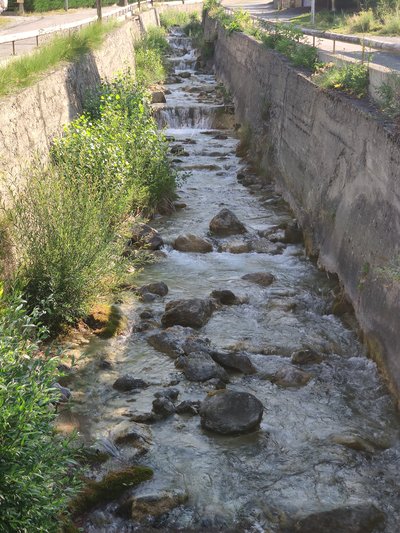
Torrent de Bouchouse - Office de tourisme du Pays des Écrins  Water
WaterBouchouse mountain stream
The Bouchouse mountain stream is fed by the Le Pansier and La Pisse mountain streams 1,900 metres above sea level. It crosses the municipality of La Roche-de-Rame, supplying it with water. This mountain stream then flows into the Durance below the municipality.

Lavande à feuilles étroites - Bernard Nicollet - Parc national des Écrins  Flora
FloraThe narrow-leaved lavender
The narrow-leaved lavender has greenish-grey leaves and violet flowers. It grows in sunny areas, a reminder that the Pays de Écrins is in the Southern Alps after all! Not to be confused with the lavandin, this plant naturally grows on rocky slopes in the mountains of the Midi. The word «lavender» is thought to come from the Latin "to wash". This etymology suggests that lavender was used at a very early date to perfume washing.
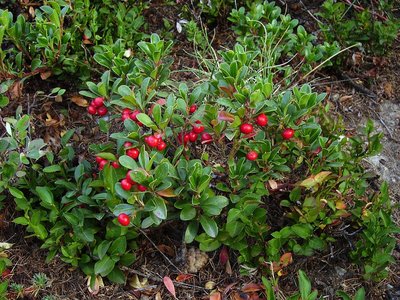
Raisin d'ours - Nicollet Bernard - Parc national des Écrins  Flora
FloraThe bearberry
The bearberry is a small bush which grows no taller than 20 centimetres. Its small, glossy, evergreen leaves are reminiscent of those of the lingonberry (Vaccinium vitis idaea) but they are not as thick and, above all, its fruits are much less appetising, although they are edible. It will depend on your tastes!
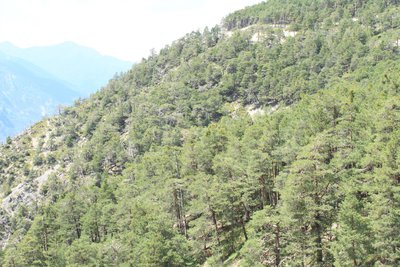
Bois du Truc - Office de tourisme du Pays des Écrins  History
HistoryThe Bois du Truc
The Bois du Truc overlooks the rock beds above the hamlet of Le Bathéou in the municipality of La Roche-de-Rame. In our region, a truc is a large buried rock, a rocky area or an abrupt buttress. So the Bois du Truc is the "wood of the large rock".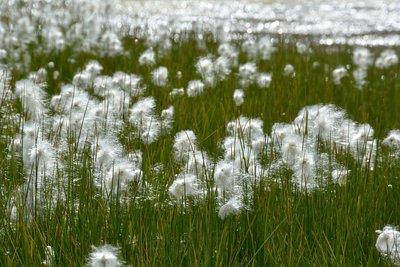
Des linaigrettes - Mireille Coulon - Parc national des Écrins  Flora
FloraCotton grass
On the water's edge, in the wet meadow, plants with a cottony head sway gently. This is cotton grass, a plant which has insignificant rudimentary flowers but it has fruits that have feathery tufts which aid their dispersal by the wind. The fruits are grouped in such a way that their tufts form a very appealing «pompom»! These plants are well adapted to the mountain climate.
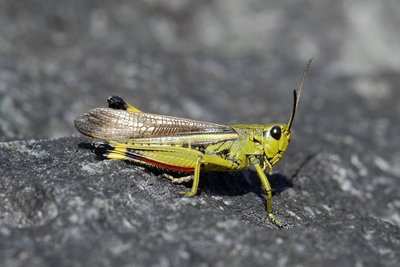
Le criquet ensanglanté - Mireille Coulon - Parc national des Écrins  Fauna
FaunaThe large marsh grasshopper
In the wet areas beside the streams lives the large marsh grasshopper. Its French name, criquet engsanglanté, translates as the "bloodied grasshopper" because the female has purple-red marks which stand out against her general green colour. Her eggs are drought-sensitive so she only lays them in damp soil. When courting the female, the male does not chirp but makes clicking sounds, which he produces by stretching his hind leg in a sudden movement.
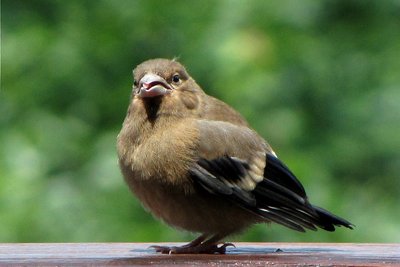
Jeune bouvreuil - Christophe Albert - Parc national des Écrins  Fauna
FaunaThe bullfinch
Gentle and melancholic calls can be heard coming from trees in the forest. They are the calls of the bullfinch, a plump and timid little passerine. The male can be identified from his pinkish red underside, while the female's is beige. Both have a black cap. They often live in small groups, staying in contact with one another through their little calls. It is a year-round resident.
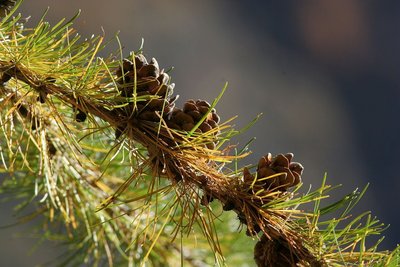
Mélèze avec cônes - Robert Chevalier - Parc national des Écrins  Flora
FloraThe larch
Golden yellow needles in autumn, purple cones in the spring... The larch offers colour interest throughout the year, and rather suits its title "the tree of light". It drops its soft deciduous needles in autumn and winter. In spring, the slender branches of this conifer are dotted with female flowers, which will develop into cones, and male flowers. The larch thrives on the north-facing slopes and lights up the mountainsides.

Pulsatille des montagnes - Thierry Maillet - Parc national des Écrins  Flora
FloraThe alpine anemone
The alpine anemone or the alpine pulsatilla blooms here in the spring. It is a plant with a downy covering of white hairs on the large drooping flowers which are dark purple, contrasting with the bright yellow of the numerous stamens, and with very indented leaves. In summer, its fruits with a long pappus, or tuft, form a feathery seed head atop the stem. Although it is frequently found in localised areas, it is nevertheless a rare species dependent on steppe meadows in the Durance valley.
Source

Report a problem or an error
If you have found an error on this page or if you have noticed any problems during your hike, please report them to us here:

